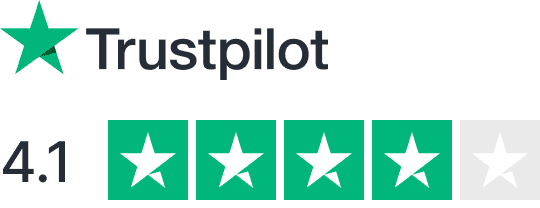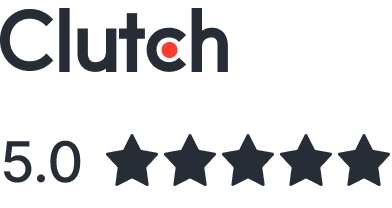Managing resources for remote teams can be challenging, but it’s key to improving productivity, collaboration, and project delivery. Here’s what you’ll learn in this guide:
- Key Benefits: Aligning resources with skills improves productivity, speeds up timelines, and strengthens teamwork across time zones.
- Challenges: Time zone differences, communication gaps, and technical issues can disrupt workflows.
- Solutions: Use tools for task management, communication, and scheduling, while leveraging data to make informed decisions.
- Quick Wins:
- Prioritize tasks based on goals.
- Match skills to project needs.
- Use pre-vetted professionals for skill gaps.
- Regularly review team capacity and workloads.
- Tools to Use: Task management platforms, team communication tools, and scheduling software simplify resource allocation.
This guide provides actionable steps, tools, and insights to streamline resource management for remote teams, ensuring they meet business goals effectively.
STEP by STEP Simple but Powerful Resource Allocation …
Core Resource Allocation Methods
This section focuses on practical ways to allocate resources for remote teams efficiently, addressing common challenges along the way.
Proper resource allocation ensures your team’s skills align with your business objectives. Here’s how to manage remote resources effectively.
Matching Resources to Business Goals
Start by aligning your resources with what your business needs. For remote teams, this means mapping out available skills and tools against project requirements. A structured approach involves:
- Prioritizing Goals: Identify which tasks or objectives need immediate attention.
- Pinpointing Expertise: Understand the specific skills required for each project.
- Addressing Gaps: Recognize where your team lacks capabilities and consider temporary staffing solutions.
For projects needing niche expertise, hiring additional staff on a short-term basis can close those gaps quickly.
Team Skills and Capacity Review
A detailed skills review helps ensure resources are distributed effectively. Evaluating a remote team’s abilities typically involves several steps:
| Assessment Stage | Focus Area | Key Metric |
|---|---|---|
| Initial Screening | Resume & Professional Profile | 100% manual verification |
| Technical Assessment | Core Skills & Expertise | 3.1% pass rate |
| Soft Skills Evaluation | Communication & Culture Fit | 10.6% invited for live screening |
When reviewing capacity, take into account current workloads, time zone overlaps that might affect collaboration, and the technical tools your team relies on.
Work Distribution Methods
Distributing tasks effectively means leveraging your team’s strengths. Here are some strategies to consider:
- Skills-Based Assignments: Assign tasks to team members with the right expertise.
- Regular Workload Checks: Periodically review workloads and adjust resources as needed, including adding temporary staff if necessary.
- Cross-Training: Offer opportunities for team members to learn new skills, increasing flexibility and readiness for future projects.
Next, we’ll dive into the tools that make these resource allocation strategies easier to implement.
Resource Management Software
Effectively managing remote teams requires tools that simplify workflows and enhance collaboration. The right software can make a big difference in how resources are allocated and how productive your team can be.
Task Management Platforms
Task management platforms help centralize work assignments and track progress. Here are some features to look for:
| Feature | Purpose | Benefit for Resource Management |
|---|---|---|
| Visual Workload | Monitor team capacity | Prevents overloading team members |
| Time Tracking | Measure task durations | Improves accuracy in task planning |
| Project Templates | Standardize workflows | Saves time when setting up new projects |
| Utilization Reports | Track team usage | Enhances oversight and boosts efficiency |
When choosing a task management tool, prioritize options with real-time updates and cross-platform compatibility. This ensures smooth coordination across time zones and devices.
Team Communication Tools
Clear communication is essential for managing resources remotely. Look for communication platforms that offer:
- Dedicated channels to organize conversations by project or team
- File sharing for easy distribution and collaboration
- Integration options to connect with other tools you use
- Search functionality to quickly find past discussions or decisions
Pick tools that align with your team’s communication habits and meet professional standards for security. Pair these tools with scheduling solutions to balance workloads and team availability.
Schedule Management Tools
Scheduling platforms are key to managing team availability across different time zones. Key features include:
1. Real-Time Availability Tracking
These tools display working hours and commitments, helping to avoid conflicts and balance workloads.
2. Capacity Planning
They monitor team utilization, flag risks of overloading, suggest adjustments, and keep track of time-off patterns.
3. Resource Forecasting
By analyzing historical data and project pipelines, these tools help predict resource needs, making it easier to scale and allocate effectively.
Choose scheduling tools that integrate well with other software to ensure seamless data sharing and a clear view of your team’s resource allocation.
sbb-itb-a3fbb4e
Growing Your Resource System
Managing resources effectively is key to scaling remote teams. Adjust your system to maintain productivity as your team grows.
Creating Clear Workflows
Setting up clear workflows helps keep things running smoothly as your team expands.
| Workflow Component | Purpose | Tips for Implementation |
|---|---|---|
| Onboarding Process | Quickly integrate new team members | Document steps and assign mentors |
| Task Assignment | Distribute work effectively | Define roles and approval processes |
| Progress Tracking | Keep projects on track | Use checkpoints and KPIs to monitor progress |
| Resource Requests | Address team needs efficiently | Create support channels for easy access |
These workflows help teams make better decisions based on solid data.
Making Data-Based Decisions
Using metrics can improve how resources are allocated and boost team performance.
"Ensures transparent communication from the start, committing only to deliverables that can be executed exceptionally well" [1][1]
Key performance indicators to track:
- Team Utilization Rate
- Project Completion Times
- Resource Allocation Success
"Data-driven decision maker, ensuring transparency and control at every level. Provides strategic financial insights and guidance to drive organizational success" [1][1]
By relying on data, you can adjust resources as needed, and a mixed team structure can further support growth.
Mixed Team Structure
Combining full-time staff with specialized contractors allows for flexible scaling.
- Core Team Development
- Keep full-time employees for stability and consistent project delivery.
- Specialized Augmentation
- Bring in experts for specific projects. For example, a 96% success rate has been reported when working with vetted professionals [1][1].
- Integration Strategy
- Focus on metrics like customer satisfaction to ensure smooth collaboration.
Best practices include:
- Assessing current team capabilities
- Identifying skill gaps
- Maintaining open communication
- Setting clear performance metrics
- Creating an inclusive work environment
CareMinds Remote Team Solutions

Managing remote teams effectively means having access to skilled professionals and reliable support. CareMinds tackles these challenges with a focus on matching top talent and offering comprehensive services. Here’s how CareMinds stands out with its quick talent-matching process.
3-Day Talent Matching
CareMinds speeds up the hiring process by matching teams with skilled professionals in just three days. Their network includes over 1,000 pre-vetted developers, with only the top 1% making the cut. This selective approach ensures teams get experts who can start contributing right away.
Here’s a breakdown of the matching process:
| Phase | Timeline | Key Activities |
|---|---|---|
| Discovery | 30 minutes | Initial consultation to identify team requirements |
| Candidate Review | 3 days | Evaluation of pre-screened matches with video profiles |
| Trial Period | 2 weeks | Risk-free trial to assess the selected talent |
Flexible Team Structure Options
CareMinds provides adaptable engagement models, starting at $31 per hour. These options allow teams to bring in specialized talent without overspending. The process is designed to integrate smoothly with HR support systems.
The engagement model includes:
- A 2-week trial period
- A 3-month evaluation
- An option for long-term integration after one year
Quality and HR Support
CareMinds takes care of administrative tasks, so teams can focus on their primary goals.
"Our developers are fully vetted, ensuring they deliver high-quality work just like your in-house staff, seamlessly integrating into your team." – CareMinds
Their vetting process includes:
- A thorough technical skills assessment
- A review of soft skills to ensure cultural fit
With partnerships involving over 120 verified companies and 100+ recruiters, CareMinds evaluates around 100 candidates to find the perfect match for your team.
Summary
Here’s a quick overview and actionable steps to improve how you allocate resources for remote teams.
Key Points Review
Managing resources for remote teams effectively means combining smart talent management with streamlined operations. Here’s how it works:
| Area | Key Strategies |
|---|---|
| Talent Access | – Use pre-vetted talent for quick scaling – Assess both technical and interpersonal skills – Evaluate for team compatibility |
| Team Structure | – Offer flexible engagement options – Use trial periods to reduce risks – Set clear integration processes |
| Performance Optimization | – Conduct regular skill evaluations – Make decisions based on data – Maintain open communication channels |
These strategies lay the foundation for your next steps.
Next Steps
Take these steps to refine your remote resource allocation:
- Define Your Resource Needs: Start by identifying your team’s current strengths and any skill gaps.
- Choose the Right Engagement Model: Consider trial periods and long-term options to find the best fit for your team.
- Set Up Clear Processes: Create structured communication and management workflows to keep things running smoothly.
"We value expertise and results over CVs. Our developers are chosen for their proven performance, not just the names on their resumes." – CareMinds
Companies that adopt these strategies often see faster project completion. Regularly reviewing and adjusting your approach ensures your remote team stays effective. With support from services like CareMinds, which boasts a 96% success rate in matching talent, businesses can build remote teams that consistently deliver results.
















